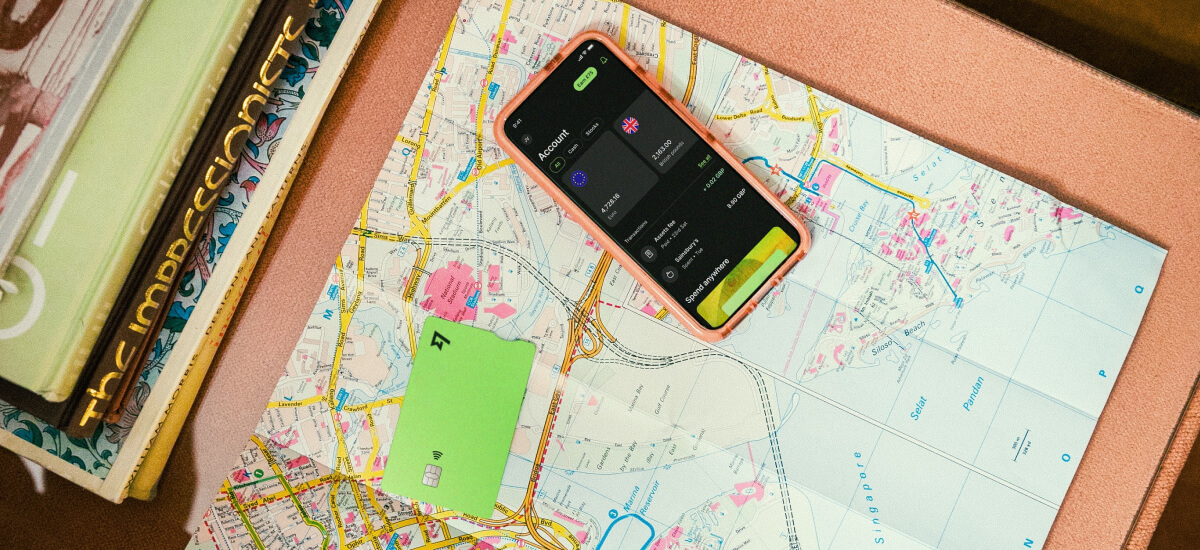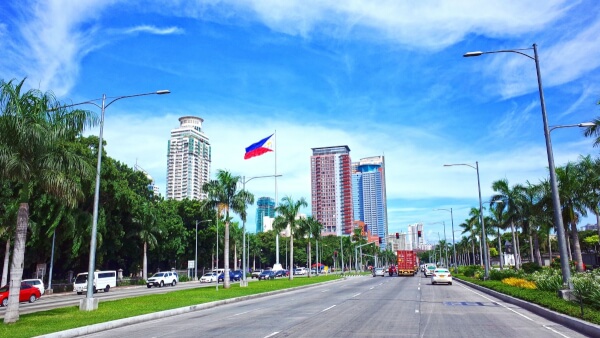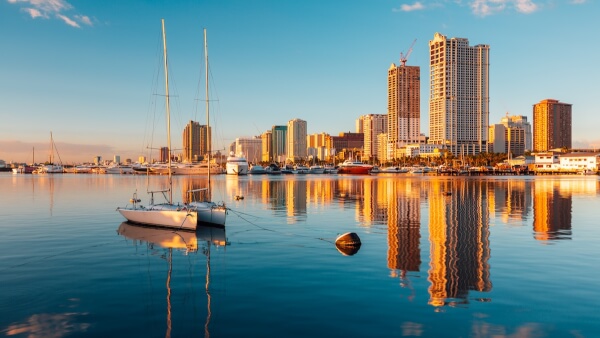Selling property in the Philippines: Taxes for Americans
What taxes do you need to pay when selling property in Philippines? Have a look at our guide to learn all about types, deadlines, and special considerations.

Got a new job in the Philippines, or relocating to join relatives there? Read on for the ultimate guide to planning your move.
We’ll run through absolutely everything you need to know as an American moving to the Philippines. This includes info on visas, cost of living, housing, healthcare and managing your money in the Philippines.
We’ll also introduce you to the Wise Account, a smart way to cut the costs of international transfers at every stage of your move.
First up, some basic facts you need to know about the Philippines:
Before we look at anything else, let’s address a couple of the most important questions you’ll want an answer to.
Can you legally move to the Philippines from another country? And how long can a US citizen live in the Philippines?
In short, yes - you can move to the Philippines for a long-term stay. And if you choose the right visa (such as the retirement visa, for example), you can stay indefinitely.
You can choose one of a few different routes into the Philippines as a US national, depending on your circumstances.
You can move there for work, study, retirement, start a business or to join family or a spouse living in the country. But you’ll need to make sure you get the right visa, especially if you plan to work in the Philippines.
But don’t worry, as we’ll cover what you need next.
As a US citizen, you can choose from one of a number of visa types for the Philippines. You can visit visa-free as a tourist, but only for up to 30 days.
If you’ll be staying longer, a long-stay visa will be required. We’ll run through a few of the main options here.
This visa is designed for foreign citizens who plan to work for a Filipino company. To get this visa, you’ll also need to apply for a work permit. This will be provisional at first, but you can renew it.
You’ll need to submit documentation to prove your identity and employment details, as will your employer.
The application fee for this visa is $400, although this may not include the fee for work permit applications.
This is for foreign students who have been accepted for a course of study at a Filipino educational institution. Your university will need to be recognized as a Philippine Higher Education Institution (HEI) authorized to accept foreign students.
You’ll need to provide lots of documentation, including course acceptance letters, medical certificates and police clearance certificates. The fee to apply is $250.00
There’s an interesting visa type billed as the Special Resident Retiree's Visa (SRRV) in the Philippines.
It’s designed for foreign nationals thinking of moving to the Philippines to retire.
However, it’s available to anyone over the age of 35 who is in good health, so you don’t need to be at retirement age to apply.
There are some conditions attached though. To be eligible, you must meet one of the following requirements:
The fee for this visa is quite steep. It costs $1,400 to apply, then an annual fee of $360. You’ll also need to provide lots of documentation.
| 💡 Want to know about getting dual citizenship? Read this guide. |
|---|
Moving overseas is a pretty big deal. It’ll nearly always require a period of adjustment, with lots of new things to get used to.
So, is it a good idea to move to the Philippines? And what can you expect from your new life there?
To help you prepare, we’ve put together some useful info that anyone moving to the Philippines from the USA needs to know. This includes things like the cost of living, housing and how money and banks work in the Philippines.
How much money do you need to move to the Philippines? To give you an idea of how far your money will go there, it’s useful to look at average prices for everyday expenses.
Here are some examples, compared to prices in the US. For ease, we’ve given these costs in USD.
| Cost in the Philippines³ | Cost in the US³ | |
|---|---|---|
| Three-course meal for two people | $21.52 | $75 |
| Loaf of bread | $1.19 | $3.54 |
| 0.5 liter of domestic beer | $1.26 | $6 |
| Monthly public transport pass | $10.14 | $70 |
| Utilities - monthly (basic) | $100.15 | $188.70 |
| Rent for a 1-bedroom apartment in city center | $324.40 | $1,708.27 |
| Price to purchase 1-bed apartment in city center - per sq.m | $2,616.76 | $4,692.35 |
(03-Aug-2023)
Of course, prices will vary considerably depending on where you move to. It’s likely to be more expensive living in a city center compared to a more rural area.
But on average, the cost of living in the Philippines is around 52% cheaper than the US³, which is good to know. Property is much cheaper too, as you can see from the table above.
| 💡 Need a convenient, low cost way to manage your everyday expenses? Get the Wise Multi-Currency Card, and you can spend in Philippine peso from the moment you arrive in the Philippines. |
|---|
Before you need to think about everyday living costs in the Philippines, you’ll need to find out how much it’ll cost to actually get there.
This includes things like shipping costs for your furniture and belongings, and flights for your family. You might also want to look into options for bringing any family pets with you.
You’ll need to get quotes from shipping companies for your specific departure and arrival destinations, and for how much stuff you have.
But on average, you can expect to pay anywhere between $850 and $4,500 to get a full shipping container from the US to the Philippines.⁴
Sending your possessions by sea is generally cheaper than by air, but it’s much slower.
One of the most important things to do when moving overseas (aside from getting your visa) is finding somewhere to live.
As we’ve seen from our cost of living prices table, rent in the Philippines tends to be much cheaper than the US. And buying a property is significantly more affordable too.
Renting is a popular option for new arrivals, as it gives you time to scout out suitable properties to purchase.
Unfortunately, the public healthcare system in the Philippines doesn’t have a great reputation. In fact, a study in 2018 ranked it at 124th out of 195 countries.⁵
So, having private health cover is a priority for expats, as it means you’ll be able to access and afford higher quality facilities and services.
If you’re moving to a new country, you’re likely to need a local bank account.
You can open a bank account in the Philippines as a US citizen. In most cases, you’ll need to visit a branch in person to present your documents and verify your identity. But some major banks may accept online applications.
You’ll find most banking and financial services within big cities like Manila and Cebu. ATMs are easy to find in cities too, but you may struggle in smaller towns and rural areas. Many ATMs charge fees too.
The education system in the Philippines is based on the American model. So that, along with the fact that English is widely spoken, should make it easier for US students to adjust.
There’s a mix of public and private schools, along with international schools based in big cities like Manila. Classes tend to be taught in English, and the school year generally runs from June to March.
Figuring out the best way to travel around a nation made up of thousands of islands can be a little tricky. So, be prepared to do a little advance planning.
In major cities like Manila, you’ll have lots of options for cheap public transport, although service quality is pretty varied. You can hop on a coach bus, take a ‘jeepney’ ( a former US military jeep converted into a colorful private bus) or a single-seat tricycle taxi.
Taxis are widely available, but you’ll need to be vigilant against scams as a foreigner.
To get across the country, you can take a mix of domestic flights and ferries, between islands.
Driving isn’t necessarily recommended, as traffic can be hugely congested and road conditions can vary.

Before your big move, you’ll likely need to have some initial costs to cover. For example, shipping, rental deposits, real estate fees or other basic charges.
This’ll mean sending money between the US and the Philippines. It can be expensive using your bank, but there is a cheaper, easier alternative available.
Use Wise and you can cut the costs of sending money to the Philippines.
Wise uses mid-market exchange rates along with low, transparent fees. Arrange your payment online for convenience, and track your transfer in the Wise app at a glance.
You can also use the Wise Account to hold and exchange 40+ currencies - all with no minimum balance and no monthly fee.
And so you can spend like a local from the second you land, it’s worth getting yourself a Wise Multi-Currency Card for a one-time fee of just $9.
Wise is a money service business, offering a multi-currency account, international money transfer services and a debit card.
See how much you can save with Wise:
Please see Terms of Use for your region or visit Wise Fees & Pricing: Only Pay for What You Use for the most up-to-date pricing and fee information.
For some expats, it’ll be important to move to a particular destination for a new job or course of study, or to be near family.
But if you’re still deciding where to go, here are a few of the most popular cities to live in the Philippines as an expat:
After reading this guide, you should have a better idea of what to expect from your new life in the Philippines. We’ve covered a lot of ground, looking at everything from healthcare and housing to transport and schools.
There’s a lot to do to prepare for your big move, starting with the all-important step of applying for your visa. It’s easy to feel overwhelmed, but don’t worry.
Using the info we’ve provided here, you should be better prepared to tick off some essentials - such as working out how to manage your money, find somewhere to live and get yourself some healthcare cover.
You might find it difficult to open a Philippines bank account until you actually arrive, as some local banks require you to visit a branch in person. But it’s good to know that you can open a Wise Account online ahead of your move.
With Wise, you’ll have a convenient, low-cost way to cover those initial relocation expenses. And with the Wise Multi-Currency Card, you’ll be able to spend in Philippine pesos as soon as you step off the plane.
Sources used for this article:
Sources checked on 03-Aug-2023.
*Please see terms of use and product availability for your region or visit Wise fees and pricing for the most up to date pricing and fee information.
This publication is provided for general information purposes and does not constitute legal, tax or other professional advice from Wise Payments Limited or its subsidiaries and its affiliates, and it is not intended as a substitute for obtaining advice from a financial advisor or any other professional.
We make no representations, warranties or guarantees, whether expressed or implied, that the content in the publication is accurate, complete or up to date.

What taxes do you need to pay when selling property in Philippines? Have a look at our guide to learn all about types, deadlines, and special considerations.

Everything you need to know about international schools in Manila, Philippines.

Want to learn about property taxes in the Philippines? This guide covers types of property taxes and how they are calculated to help you navigate the process.

To get you started, here’s a beginners guide to the laws concerning dual citizenship in the Philippines.

When you’re expecting a newborn, life can be both wonderful and stressful at the same time. This is especially true if you’re on leave as a foreigner or...

With 17,500km of coastline and over 7,000 islands, the Philippines is a popular destination for those considering a relocation. Before you take the leap, you...